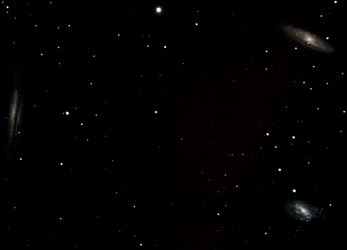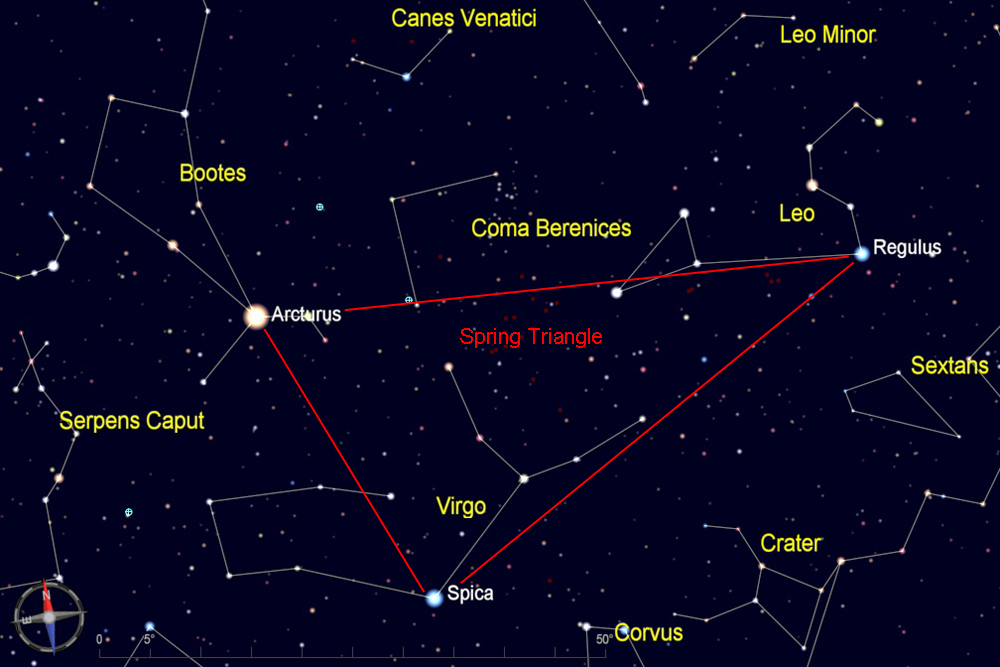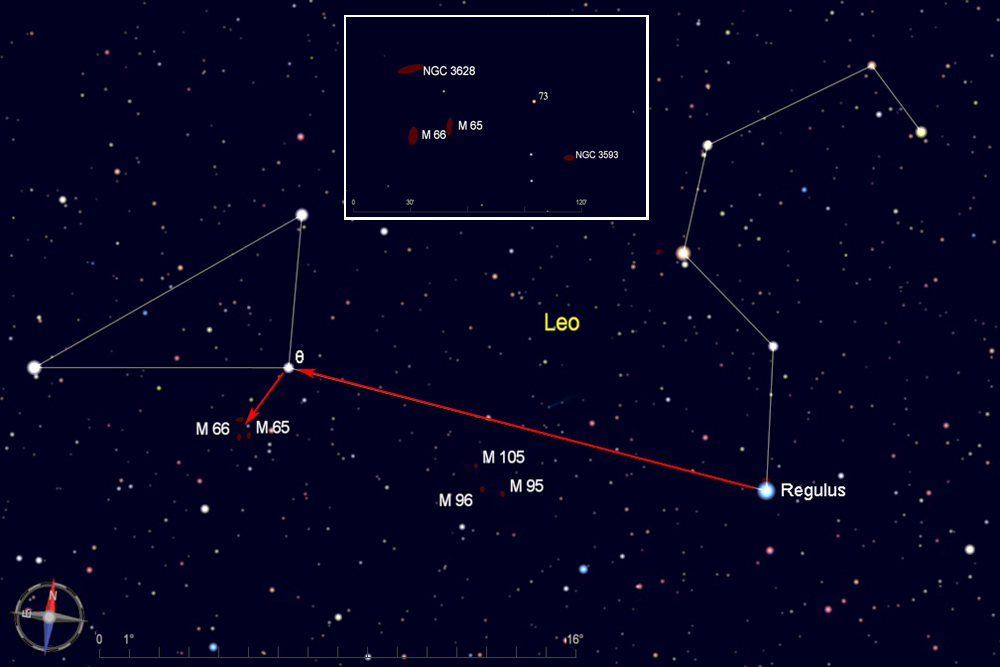These three galaxies will all fit in a 1-degree field of view of a low-power eyepiece, and they are bright enough to be seen with even small telescopes. Messier 65 and 66 appear oval with brighter centers. NGC 3628 is larger but dimmer and more challenging to see. It has a very elongated shape, and with large telescopes its dust lane can be spotted. This group of galaxies is about 35 to 40 million light years away.
|
 |
| Evening visibility: |
February-June |
| Best viewed with: |
telescope |
| |
Printable chart (pdf) |
View larger image |
Directions:
Start by finding the Spring Triangle, which consists of three widely-separated first magnitude stars--Arcturus, Spica, and Regulus. The Spring Triangle is high in the southeast sky in early spring, and in the southwest sky by mid-Summer. (To get oriented, you can use the handle of the Big Dipper and "follow the arc to Arcturus").
For this star hop, begin at Regulus in the constellation Leo, the lion. |
 |
| The constellation Leo looks like a lion in profile, with its head to the west and its tail to the east. After finding Regulus, look for θ Leonis, one the the three stars that form the back end of the lion. Then move your scope about 2.5 degrees to the southeast to arrive at the region of Leo Trio. You can use low power to view them all at once, then switch to higher power to look for more details in the individual galaxies. Another spiral galaxy, NGC 3593, is nearby to the west, as shown in the inset below. |
 |
| Star charts created with Cartes du Ciel |
| |
| |


